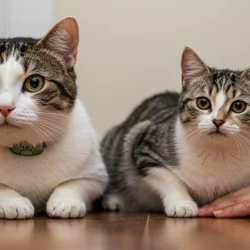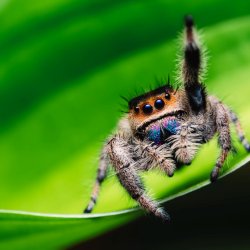How to Care for Your Pet Jumping Spider: A Comprehensive Guide
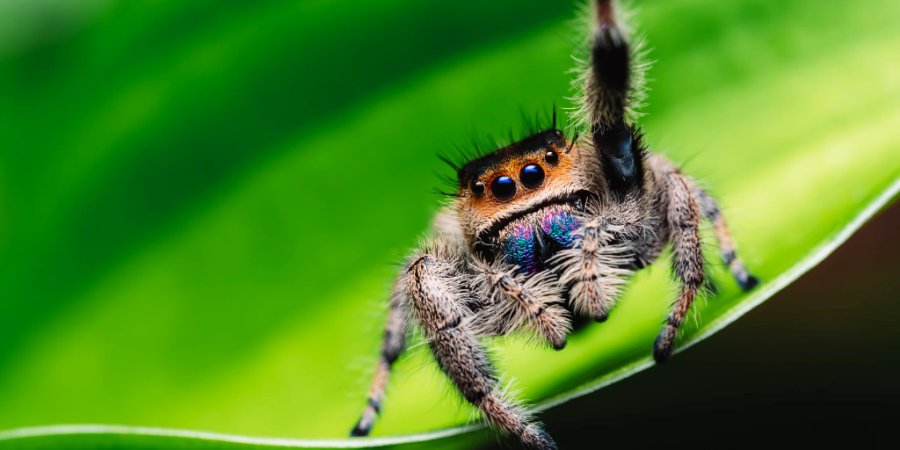
Jumping spiders, particularly the Phidippus Regius, also known as the Regal Jumping Spider, have become increasingly popular as pets. These small, intelligent creatures are known for their friendly and outgoing nature, making them the perfect beginner species for those interested in keeping spiders as pets. This article will delve into the captivating world of pet jumping spiders, covering everything from their behavior and care to their unique characteristics.
Understanding Jumping Spiders
Jumping spiders belong to the family Salticidae, which is known for its exceptional vision and unique hunting style. Unlike other spiders that rely on webs to catch their prey, jumping spiders actively hunt and pounce on their victims, hence their name. They are also known for their vibrant colors and patterns, adding to their appeal as pets.
Intelligence and Behavior
Jumping spiders are considered one of the most intelligent spider species. They exhibit advanced behaviors such as problem-solving and learning through trial and error. Some owners even report their spiders recognizing them and showing signs of interaction, which is quite rare in the world of invertebrates.
Lifespan and Size
The lifespan of a pet jumping spider varies depending on the species and care provided, but on average, they live for about a year. Some species, however, can live up to three years under optimal conditions. As for their size, jumping spiders are generally small, with most species measuring less than an inch in body length.
Different Species of Pet Jumping Spiders
There are over 5,000 species of jumping spiders, but only a handful are commonly kept as pets. Here are some of the most popular species:
Phidippus Regius (Regal Jumping Spider)
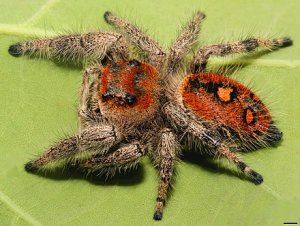
The Regal Jumping Spider is one of the largest and most commonly kept species. They are known for their striking appearance, with males sporting a shiny black body and bright white or blue markings, while females have a more subdued brown or grey coloration.
Phidippus Audax (Bold Jumping Spider)
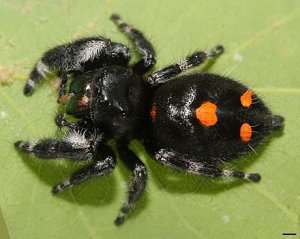
The Bold Jumping Spider is another popular choice for pet owners. They are easily recognizable by their black body and bright, iridescent green or blue mouthparts. This species is known for its bold behavior and is often seen hunting during the day.
Platycryptus Undatus (Tan Jumping Spider)
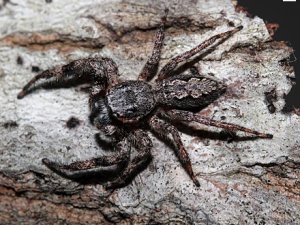
The Tan Jumping Spider is a smaller species, but what it lacks in size, it makes up for in personality. They have a distinctive tan and brown coloration and are known for their curious and friendly nature.
Breeding Jumping Spiders
Breeding jumping spiders can be a rewarding experience, but it requires careful planning and preparation. The process involves introducing a male and female spider and allowing them to mate. After mating, the female will lay eggs, which she will guard until they hatch. It's important to provide the female with plenty of food during this time to ensure she doesn't eat the eggs.
How to Care for Your Pet Jumping Spider
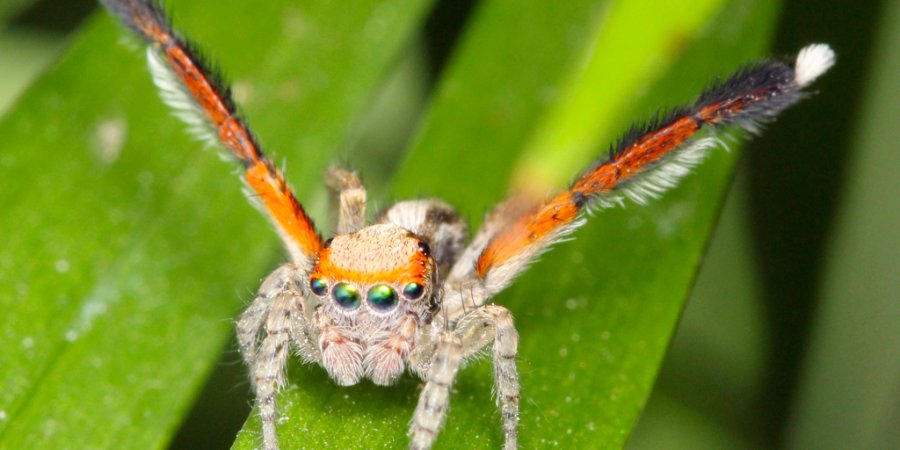
Caring for a pet jumping spider involves understanding their unique needs and behaviors. Here's a detailed guide to help you provide the best care for your eight-legged friend.
Housing Your Jumping Spider
The first step in caring for your pet jumping spider is setting up a suitable home. A small, well-ventilated enclosure is ideal. The enclosure should be at least three times the length of the spider in height and twice its length in width. This provides ample space for the spider to move and jump around.
The enclosure should have a secure lid to prevent escapes, but it also needs to allow for adequate ventilation. A variety of substrates can be used in the enclosure, including coconut fiber, peat moss, or vermiculite. These substrates help maintain humidity levels and provide a naturalistic environment for your spider.
It's also important to include some climbing structures such as twigs, cork bark, or artificial plants. These give the spider a place to explore, hide, and hunt.
Feeding Your Jumping Spider
Jumping spiders are carnivorous and require a diet of small insects. Common food choices include fruit flies, small crickets, and other tiny invertebrates. It's important to feed your spider live prey as the movement stimulates the spider's hunting instincts.
Feeding frequency varies with the spider's size and age, but generally, feeding a few times a week is sufficient. Always remove any uneaten food after 24 hours to prevent it from spoiling and attracting mites.
Hydration Needs
While jumping spiders get most of their hydration from their prey, it's still important to provide a small water dish in the enclosure. The dish should be shallow to prevent the spider from drowning. Alternatively, you can lightly mist the enclosure a few times a week.
Handling and Interaction
Jumping spiders are generally safe to handle, but it's important to do so with care to avoid causing stress or injury to the spider. They are delicate creatures and can be easily harmed by rough handling. Always allow the spider to crawl onto your hand rather than picking it up.
It's also important to note that while some jumping spiders may tolerate handling, others may prefer to be observed from a distance. Always respect your spider's comfort levels and never force interaction.
Monitoring Your Spider's Health
Regularly observe your spider for any signs of illness or distress. Healthy jumping spiders should be active and alert with clear, bright eyes. If you notice any changes in your spider's behavior, appetite, or appearance, it may be a sign of illness and you should consult with a vet experienced in invertebrate care.
By following these guidelines, you can ensure that your pet jumping spider receives the care it needs to thrive. Remember, every spider is unique and may have individual care requirements. Always be observant and responsive to your spider's needs.
Frequently Asked Questions
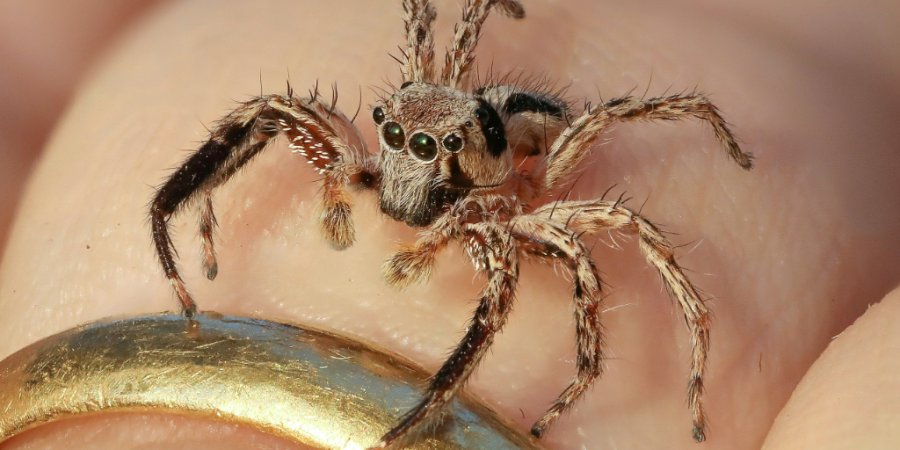
Can I Keep a Jumping Spider as a Pet?
Yes, you can keep a jumping spider as a pet. They are becoming increasingly popular due to their friendly nature and unique behaviors. However, like any pet, they require proper care and attention. It's important to research and understand their needs before deciding to keep one.
What is the Lifespan of a Pet Jumping Spider?
The lifespan of a pet jumping spider varies depending on the species and the care provided. On average, they live for about a year. However, some species can live up to three years under optimal conditions.
How Much Does a Pet Jumping Spider Cost?
The cost of a pet jumping spider can vary greatly depending on the species and where you purchase it. On average, you can expect to pay between $10 to $50 for a jumping spider. Some rare species may cost more.
What Do You Need for a Jumping Spider Pet?
To keep a jumping spider as a pet, you will need a small, well-ventilated enclosure, a substrate like coconut fiber or peat moss, and some climbing structures. You will also need a source of small insects to feed your spider.
How Often Should I Feed My Jumping Spider?
Jumping spiders should be fed a few times a week. The exact frequency can depend on the spider's size and age. It's important to monitor your spider's behavior and adjust feeding frequency as needed.
Can Jumping Spiders Recognize Their Owners?
While it's difficult to say for certain, some owners report that their jumping spiders seem to recognize them. Jumping spiders have excellent vision and are known for their intelligence, so it's possible they can recognize and react to certain stimuli, including their owners.
Are Jumping Spiders Dangerous?
Jumping spiders are not dangerous to humans. While they can bite if threatened, their venom is not harmful to humans. In fact, jumping spiders are generally quite docile and are more likely to flee than attack.
Can Jumping Spiders Live Together?
Jumping spiders are solitary creatures and should be kept individually. Keeping multiple jumping spiders together can lead to stress and aggression.
How Do I Handle My Jumping Spider?
Jumping spiders can be handled, but it should be done with care. Always allow the spider to crawl onto your hand rather than picking it up. Avoid handling your spider too frequently as it can cause stress.
Final Thoughts
According to experts who write for us on pets, jumping spiders are a testament to the wonders of the natural world. They challenge our traditional view of spiders, showcasing a level of intelligence and personality rarely seen in invertebrates. As pets, they offer a unique and rewarding experience, providing both companionship and endless fascination. So, if you're looking for a pet that's a little out of the ordinary, consider the jumping spider. You might just be surprised by how much you come to love these eight-legged friends.
More to Read:
Previous Posts:
